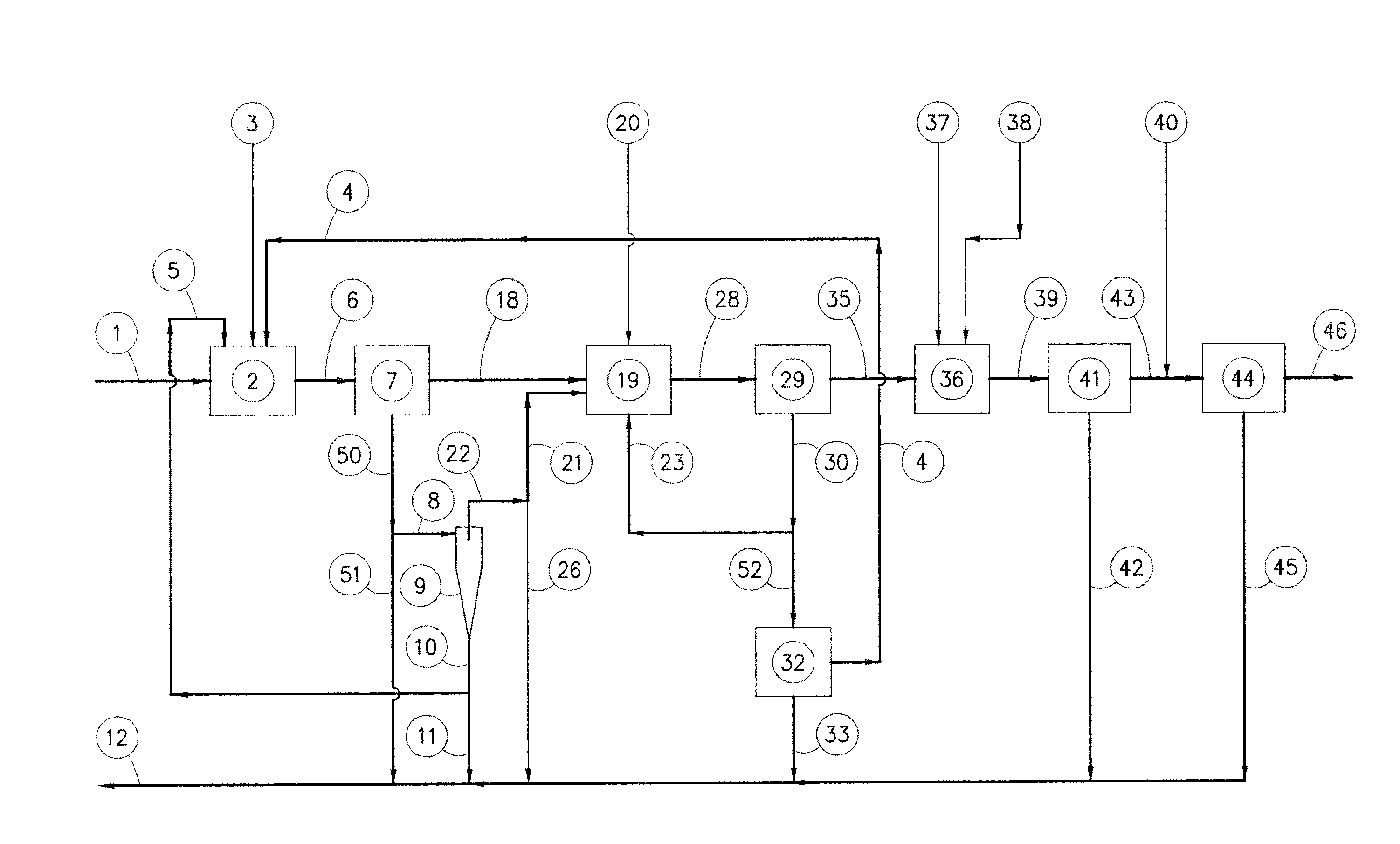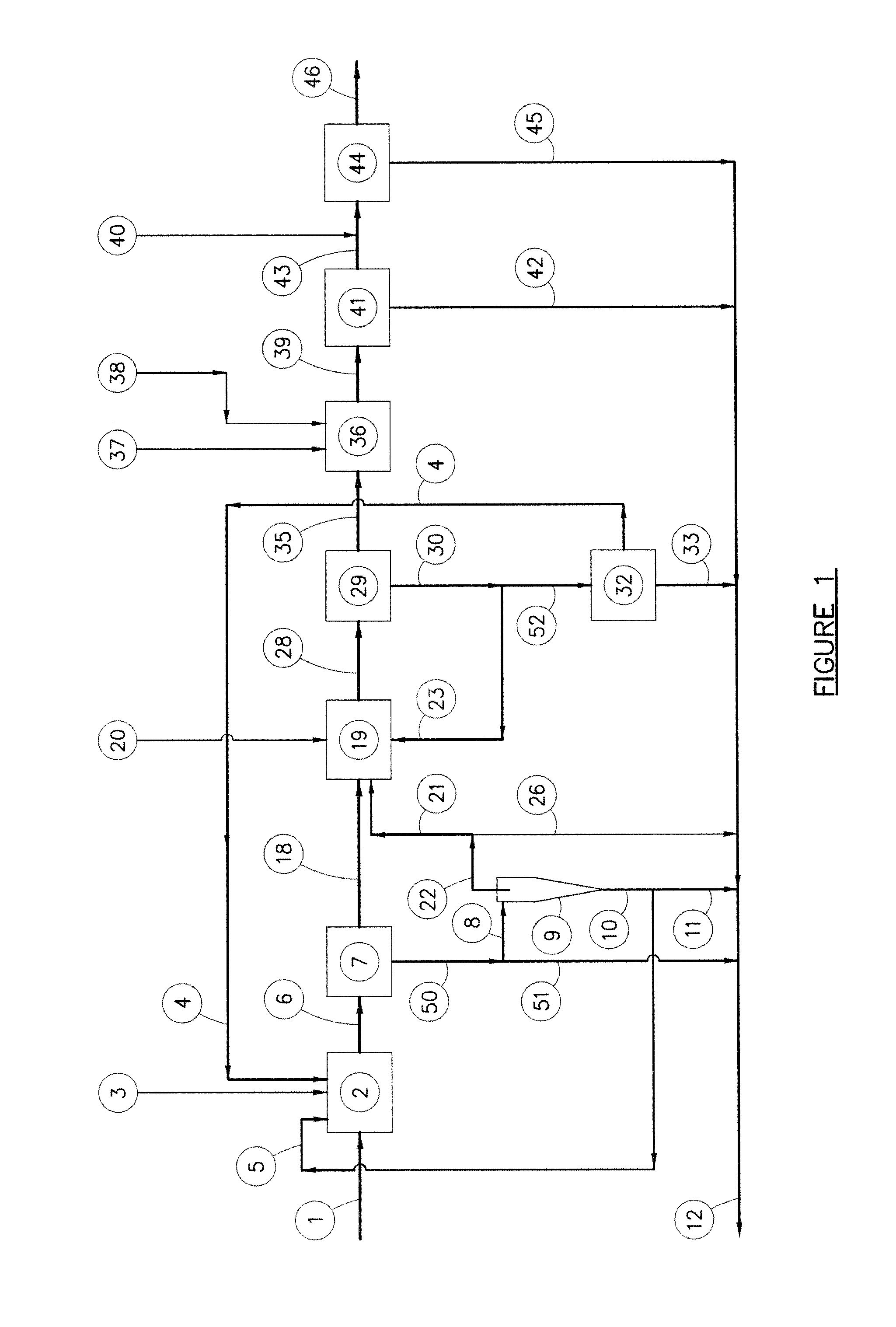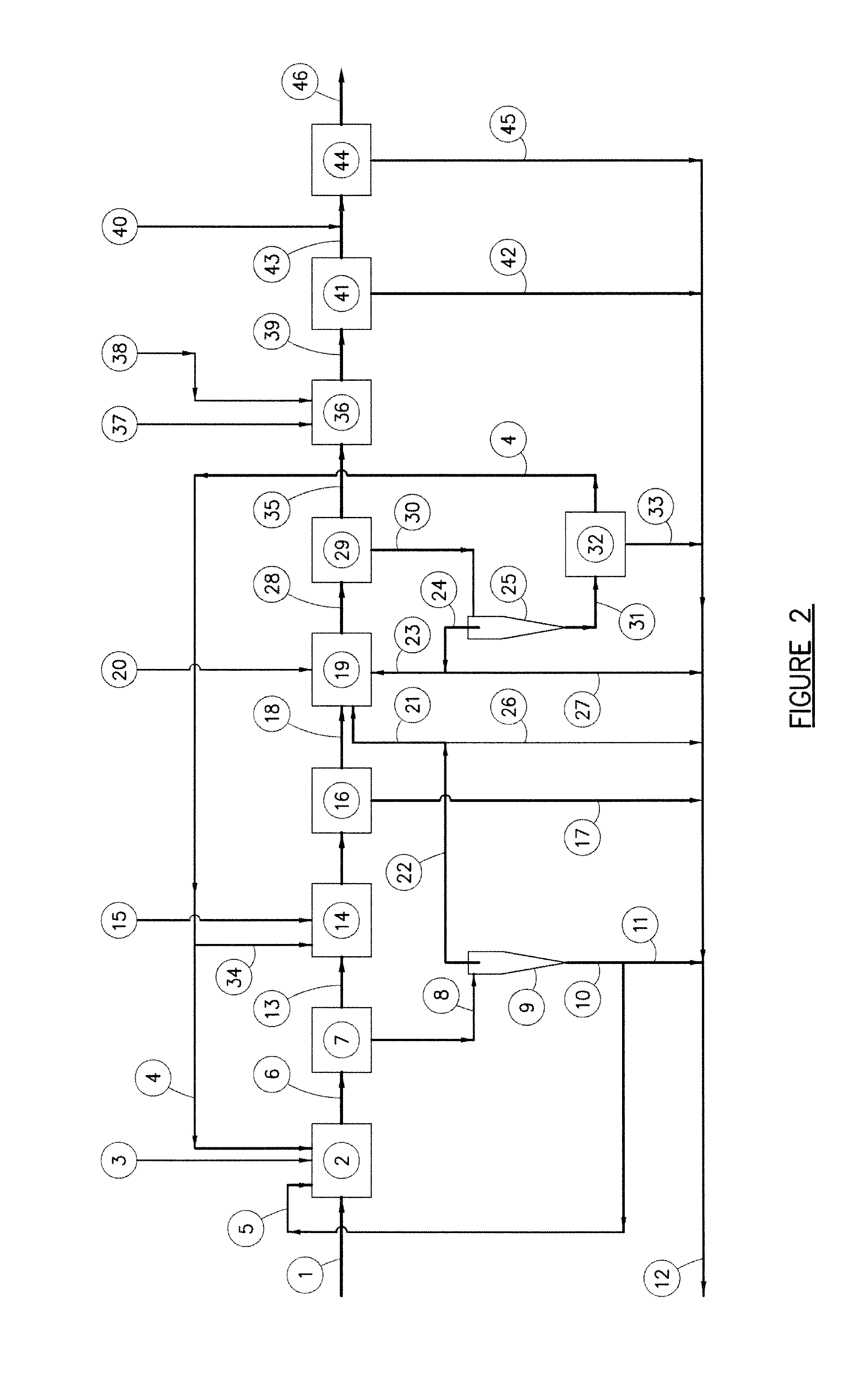New process for the treatment of high sulphate waters
a high sulphate, process technology, applied in water treatment multi-stage treatments, water/sludge/sewage treatment, water contaminants, etc., can solve the problems of no longer being used or being unable to carry the associated costs, disposal costs associated with these by-products, and process residues that exceed the purchase cost of the necessary treatment reagents, so as to achieve the effect of low operating costs
- Summary
- Abstract
- Description
- Claims
- Application Information
AI Technical Summary
Benefits of technology
Problems solved by technology
Method used
Image
Examples
example 1
New Process for Treatment of Sulphate-Rich Waters Utilizing Two Main Reaction Stages
[0048]Looking at FIG. 1, high sulphate water enters as stream 1 into the first reaction stage 2. Also entering the first reaction stage is the input of lime or a suitable hydroxide containing material 3 and the ettringite recycle stream 4 from the further reaction stage 19. Optionally, a recycle stream 5 from the gypsum separation stage 9 can also be added. Stream 5 is able to provide a source of seed crystals into the first reaction stage 2. Also, it is able to recycle some of the ettringite that may not have been fully utilised within the first reaction stage 2. Further, when it is sourced from stream 10, as shown here, it is able to recover aluminium hydroxide to the first reaction stage and thence to stream 22.
[0049]The product 6 from the first reaction stage 2 is routed to the solids separation stage 7. Some of the separated solids 50 are routed as stream 8 to the gypsum separation stage 9. In t...
example 2
New Process for Treatment of Sulphate-Rich Waters Utilizing Three Main Reaction Stages
[0063]Turning to FIG. 2, high sulphate water enters at 1 into the first reaction stage 2. Also entering the first reaction stage is the input of lime or a hydroxide containing material 3, the ettringite concentrate 4 and, if desired, an aluminium containing recycle stream 5 from the gypsum separation stage 9. The product 6 from the reaction stage 2 is routed to the solids separation stage 7. The separated solids 8 are routed to the gypsum separation stage 9, which in this embodiment of the process it is assumed that a hydrocyclone based technology is utilised. A portion 5 of the gypsum concentrate 10 can be recycled to the first reaction stage 2 as noted above as a source of seed crystals. The remainder of the gypsum concentrate 11 is routed to the solids discard 12. As noted above, this discard arrangement can utilise whatever facilities and technology that may be appropriate to the location and n...
PUM
| Property | Measurement | Unit |
|---|---|---|
| concentration | aaaaa | aaaaa |
| concentration | aaaaa | aaaaa |
| pH | aaaaa | aaaaa |
Abstract
Description
Claims
Application Information
 Login to View More
Login to View More - R&D
- Intellectual Property
- Life Sciences
- Materials
- Tech Scout
- Unparalleled Data Quality
- Higher Quality Content
- 60% Fewer Hallucinations
Browse by: Latest US Patents, China's latest patents, Technical Efficacy Thesaurus, Application Domain, Technology Topic, Popular Technical Reports.
© 2025 PatSnap. All rights reserved.Legal|Privacy policy|Modern Slavery Act Transparency Statement|Sitemap|About US| Contact US: help@patsnap.com



